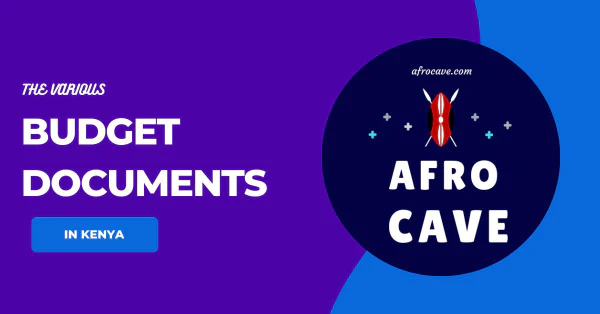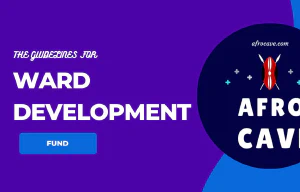Budget Documents in Kenya in the Budget Process
- Author Gĩthĩnji
- Updated on:

The national and county governments prepare budget documents in Kenya every financial year. A budget is a document that sets out the government’s proposed revenues, expenditure and priorities for a specific financial year.
A budget is prepared in line with Public Finance Management regulations to guide the country’s economic policy, accountability and management of public funds.
The budget is the blueprint upon which the government can regulate its fiscal mechanisms.
This is a continuation of part one of this article, the Budget Process in Kenya.
Table of ContentsShow/Hide
Budget documents in Kenya
The budget documents in Kenya are prepared at both the national government level and the county government level. The key budget documents in Kenya are as follows.
1. Budget Circulars
The budget circulars shall include the following information–
- a schedule for preparation of the budget indicating key dates by which various exercises are to be completed;
- the procedures for the review and projection of revenues and expenditures;
- key policy areas and issues that are to be taken into consideration when preparing the budget;
- procedures that set out how members of the public shall participate in the budget process;
- the format in which budget information and documents shall be submitted; and
- any other information that, in the opinion of the Cabinet Secretary or County Finance Executive Committee Member, may assist the budget process.
2. The Annual Development Plan (ADP)
The Annual Development Plan (ADP) is produced by each county government. The ADP shall contain:
- the medium priorities that the county governments hope to achieve. The priorities shall be drawn from the County Integrated Development Plan (CIDP), which is a medium-term (five year) development plan for the counties.
- all government programmes with performance indicators or targets. They shall show priorities similarly organized under programmes as the programme based budget.
- descriptions of major development or capital projects. These details include information on individual projects, their locations, timelines for completion and projected costs.
- explanations of major changes done to programmes or projects in the CIDP. These changes may be necessitated by certain factors like public input. The narrative (explanation) assists the public and the respective assemblies to understand how the changes were made.
- overall budget and estimated costs for major programmes and projects. The Public Finance Management Act requires the ADPs to have a summary budget for the whole county, with rough allocations (projected costs) for each programme based on their priorities.
Read more about the County Annual Development Plan.
3. The Budget Review and Outlook Paper
The County Budget Review and Outlook Paper shall contain the following information–
- the details of the actual financial performance in the previous year compared to the budget appropriation for that year;
- the updated economic and financial forecasts with sufficient information to show changes from the forecasts in the most recent County Fiscal Strategy Paper;
- information on:
- any changes in the forecasts compared with the County Fiscal Strategy Paper; or
- how actual financial performance for the previous fiscal year may have affected compliance with the fiscal responsibility principles, or the financial objectives in the County Fiscal Strategy Paper for that financial year; and
- reasons for any deviation from the financial objectives in the County Fiscal Strategy Paper together with proposals to address the deviation and the time estimated for doing so.
The National Budget Review and Outlook Paper shall contain the following–
- actual fiscal performance in the previous financial year compared to the budget appropriation (allocation) for that year;
- updated macroeconomic and financial forecasts with sufficient information to show changes from the forecasts in the most recent Budget Policy Statement;
- information on how actual financial performance for the previous fiscal year may have affected compliance with the fiscal responsibility principles or the financial objectives in the latest Budget Policy Statement; and
- the reasons for any deviation from the financial objectives together with proposals to address the deviation and the time estimated to do so.
4. The Budget Policy Statement
The Budget Policy Statement sets out the broad strategic priorities and policy goals that will guide the national government and the county governments in preparing their budgets both for the coming financial year and over the medium term (usually the next two years after the coming year).
The National Treasury shall include in the Budget Policy Statement-
- an assessment of the current state of the economy and the financial outlook for the medium term, including macroeconomic forecasts: performance;
- the financial outlook for Government revenue, expenditures and borrowing for the next financial year and over the medium term: projections;
- the proposed expenditure limits for the national government, including those of Parliament and the Judiciary and indicative transfers to county governments: ceilings;
- the fiscal responsibility principles and financial objectives over the medium term including limits on total annual debt: priorities.
5. The Division of Revenue Bill
[The Division of Revenue Bill divides the equitable share (revenue raised by the national government) between the national and the county governments.
6. The County Allocation of Revenue Bill
The County Allocation of Revenue Bill:
- divides the equitable share allocated to the counties among them (using a formula currently prepared by the Senate and revised every five years).
- indicates any other allocations to the counties, from the national government’s share of revenue, and any conditions on which those allocations shall be made.
See the difference between the division and allocation of revenue in Kenya.
7. The County Fiscal Strategy Paper (CFSP)
The County Fiscal Strategy Paper at the county level is the equivalent of the national Budget Policy Statement (BPS). The CFSP is aligned with the national objectives contained in the BPS. In preparing the County Fiscal Strategy Paper, the County Treasury shall:
- specify the broad strategic priorities and policy goals that will guide the county government in preparing its budget for the coming financial year and over the medium term.
- include in its County Fiscal Strategy Paper the financial outlook for county government revenues, expenditures and borrowing for the coming financial year and over the medium term
Read more about the County Fiscal Strategy Paper.
8. Budget Estimates
The national and county governments shall prepare and table their respective budget estimates at the National Assembly and the County Assemblies respectively. The budget estimates set the total expenditure levels for both levels of government and their ministries and programmes.
9. The Finance Bill
While the budget estimates propose how the national or county governments will spend money, the Finance Bill indicates how this money will be raised.
The Finance Bill sets out the revenue-raising measures for the national and the county governments, together with a policy statement expounding on those measures. The revenue-raising measures include taxes and property rates.
10. The Audit Reports by the Auditor General
The audit reports shall confirm whether (or not) public funds have been utilised lawfully and effectively. After auditing the accounts of all governments and other public entities, the Office of the Auditor-General prescribes measures for securing efficient and transparent fiscal management.
11. Controller of Budget reports
The Office of the Controller of Budget in Kenya shall produce these reports quarterly (every four months). Some of the information contained in these reports include:
- approved and revised budget data;
- budget performance including expenditure and revenue raised;
- exchequer issues:
- money transferred by the National Treasury from the Consolidated Fund to the ministries, departments and agencies;
- money transferred by the National Treasury from the Consolidated Fund to County Revenue Funds;
- money approved by the Controller of Budget for withdrawal from the County Revenue Funds to County Operational Accounts;
- recommendations on the budget performance
12. National and County Budget Reports
Similar to the reports by the Controller of Budget, but produced by the National Treasury for the national government and the County Treasuries for the county governments. The reports shall be produced quarterly.
(Information obtained from the Public Finance Management Act. Additional information courtesy of IBP Kenya.)
- «Previous Complain to Independent Policing Oversight Authority Kenya
- Next» Functions and Role of Kenya Law Reform Commission


